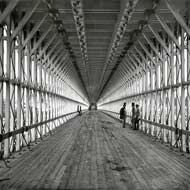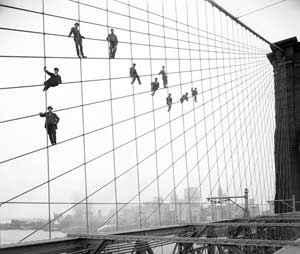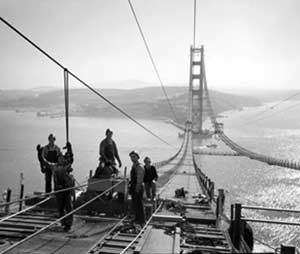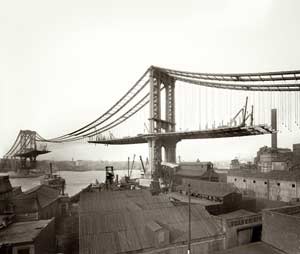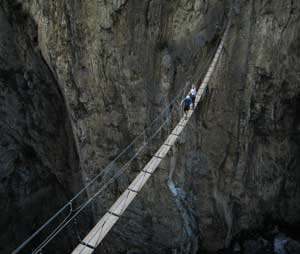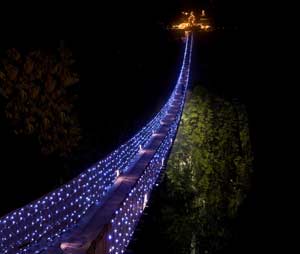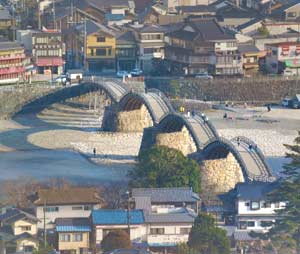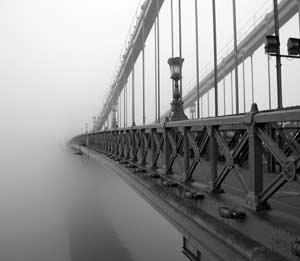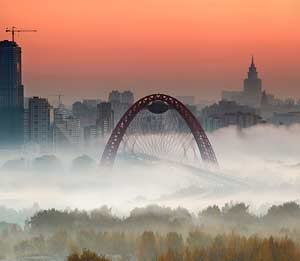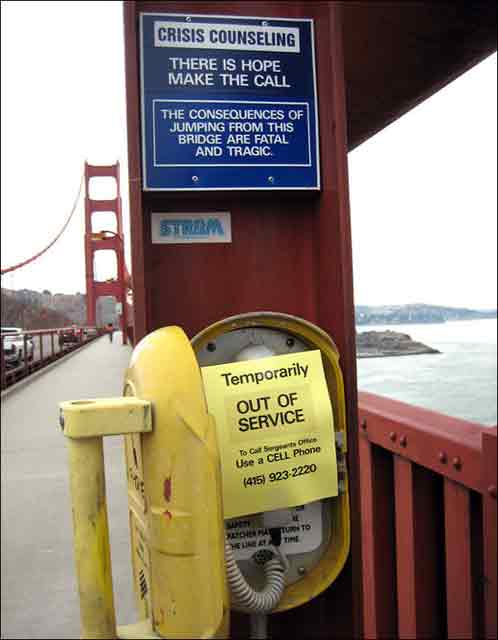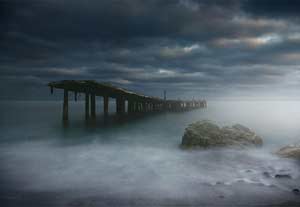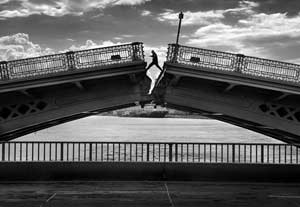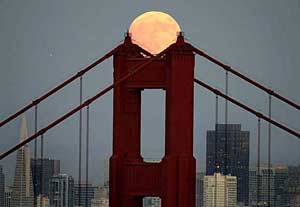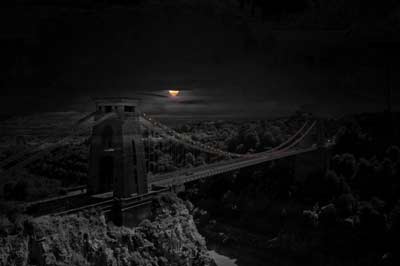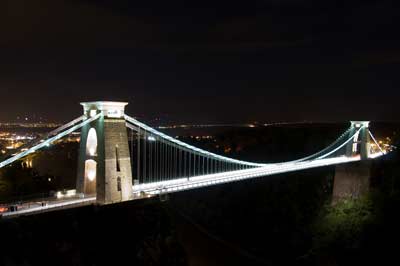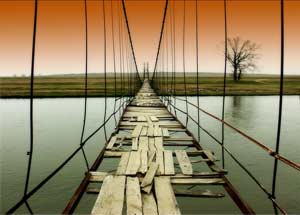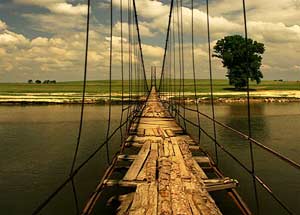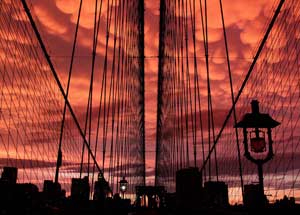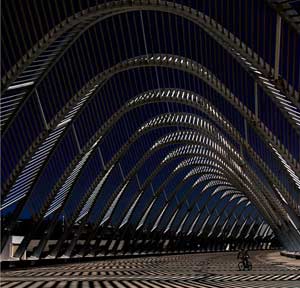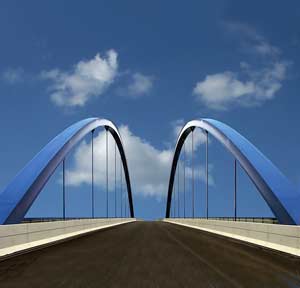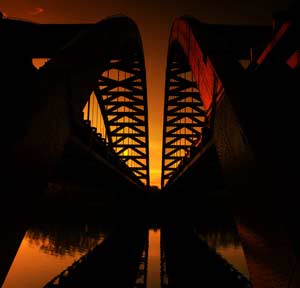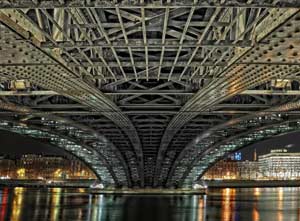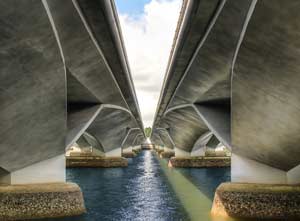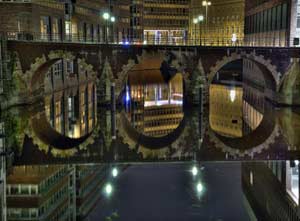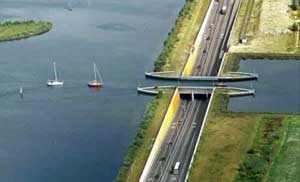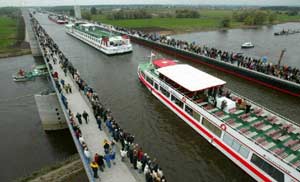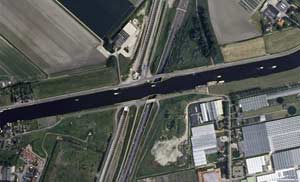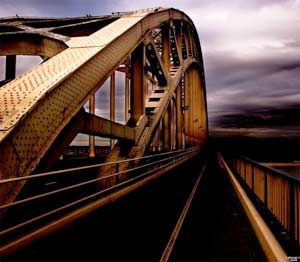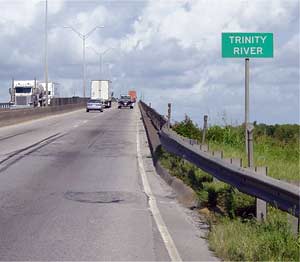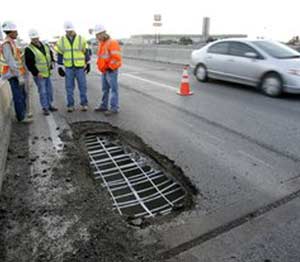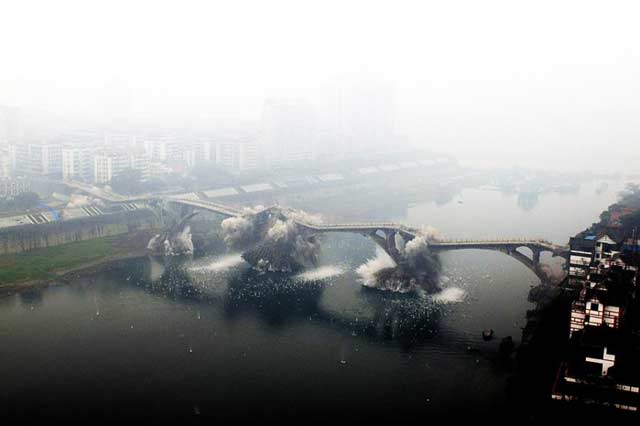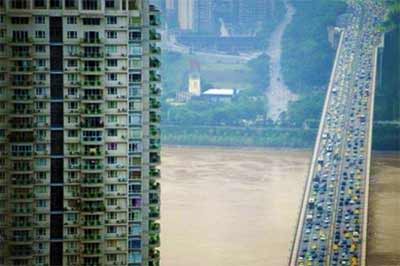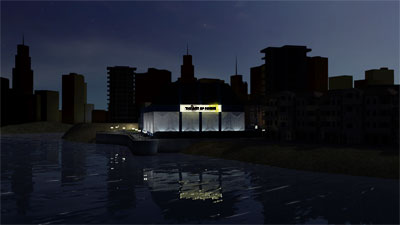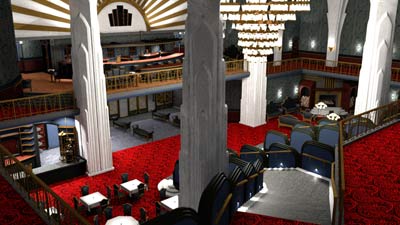Invisible Public Architecture
News and Site Updates Archive 2010/09/30We build too many walls and not enough bridges. — Isaac Newton 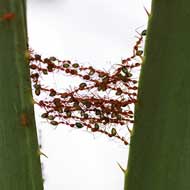
Unlike their wasp ancestors, most ants travel by walking, though some species are capable of leaping. As an example, the jumping ant (Harpegnathos saltator) is able to make leaps by synchronising the action of its mid and hind pairs of legs. There are several species of gliding ant including Cephalotes atratus. Gliding appears to be a common trait among most arboreal ants. Ants with this ability are able to control the direction of their descent while falling through the air. Other species of ants can form chains to bridge gaps over water, underground, or through spaces in vegetation. This ant bridge was photographed by Jacinda Brown. 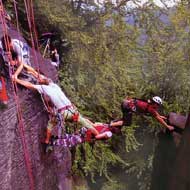
Humans, observing the ants' accomplishment, have attempted to make bridges of their own with varying degrees of success. 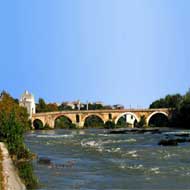
The Milvian (or Mulvian) Bridge (Italian: Ponte Milvio) in northern Rome, Italy, is one of the most important bridges over the Tiber. The bridge was built by consul Gaius Claudius Nero in 206 BC, after he had defeated the Carthaginian army in the Battle of the Metaurus. Wanting to go him one better, in 115 BC, consul Marcus Æmilius Scaurus built a new bridge made of stone in the same position, demolishing the old one. 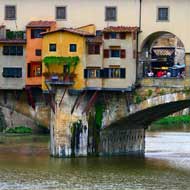
When I saw the Ponte Vecchio Bridge in Florence, Italy, I thought it looked dangerous. It seems at least possible that I was wrong, considering the fact that this Medieval bridge over the Arno River has been there for quite some time. It was first built in Roman times and was destroyed by floods and rebuilt in 1117 and again in 1333. It was rebuilt again in 1345. Sheltered in a little loggia at the central opening of the bridge is a weathered dedication stone: "In the thirty-third year following thirteen hundred, the bridge fell, from a watery flood: ten years later, at the pleasure of the Commune, it was rebuilt, with this adornment." It has always been noted for having shops built along it, though those on the upriver side weren't added until the 17th century. It is said that the economic concept of bankruptcy originated here: when a merchant could not pay his debts, the table on which he sold his wares (the "banco") was physically broken ("rotto") by soldiers, and this practice was called "bancorotto" (broken table). Not having a table anymore, the merchant was not able to sell anything. A 4 meg impressive panorama of the side of the bridge opposite to this view.
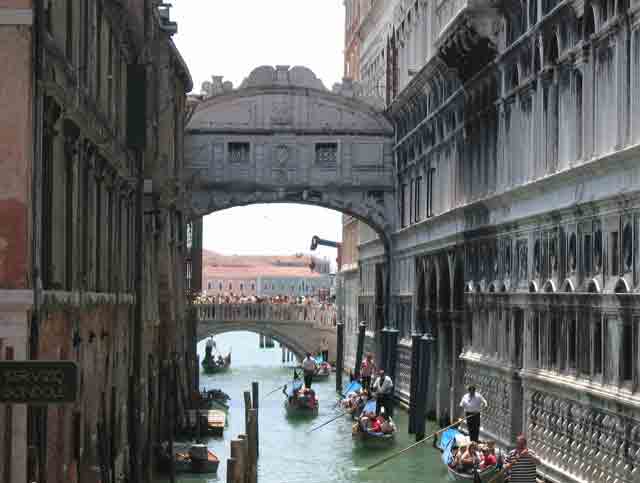 The Bridge of Sighs (Italian: Ponte dei Sospiri), Venice, northern Italy This enclosed bridge is made of white limestone and has windows with stone bars. It passes over the Rio di Palazzo and connects the old prisons to the interrogation rooms in the Doge's Palace. It was built in 1602. The view from the Bridge of Sighs was the last view of Venice that convicts saw before being imprisoned. The bridge's name, given by Lord Byron in the 19th century, comes from the suggestion that prisoners would sigh at their final view of beautiful Venice out the window before being taken down to their cells. In reality, the days of inquisitions and summary executions were over by the time the bridge was built and the cells under the palace roof were occupied mostly by small-time criminals. Also, one could barely see any view from inside the bridge due to the stone grills covering the windows.
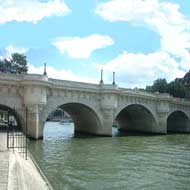 The Pont Neuf (New Bridge) is the oldest standing bridge across the river Seine in Paris, France. Its name, which was given to distinguish it from older bridges that were lined on both sides with houses, has remained. The bridge was completed under the reign of Henry IV, who inaugurated it in 1607. All through the 18th century, the Pont Neuf was the centre of Paris, lively with both crime and commerce. 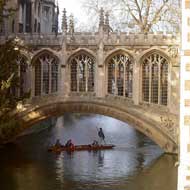
The Bridge of Sighs in Cambridge is a covered bridge belonging to St John's College of Cambridge University. It was built in 1831 and crosses the River Cam, between the college's Third Court and New Court. It is named after the Bridge of Sighs in Venice, although they have little architecturally in common beyond the fact that they're both covered. The bridge is one of Cambridge's main tourist attractions and Queen Victoria is said to have loved it more than any other spot in the city. 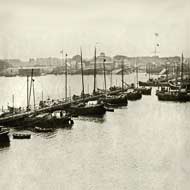
A quick way to build a bridge appears to be to just put a lot of boats in a row. (The first and last boats are anchored to the shore.) It has been used as a military technique since ancient times, including in the 5th century BC by the Persian Empire in attacks employing armies of several hundred thousand soldiers against the Greek States, to cross both the Bosporus and the Hellespont straits. Xerxes' first attempt over the Hellespont ended in failure when a terrible storm arose just as the bridge was being finished and dashed all the boats on the rocks. when Xerxes heard, he fell into such a violent anger that he commanded 300 stripes to be inflicted on the sea, and a pair of fetters to be thrown into it, telling those entrusted with the execution of his orders to pronounce these words: "Thou salt and bitter element, thy master has condemned thee to this punishment for offending him without cause and is resolved to pass over thee, in spite of thy billows, and insolent resistance." The madness of this prince didn't stop there — he had the heads of those who had directed the work struck off and started over. The photo at left was taken in 1916 of just such a bridge over the Scheldt River during World War II. (The photographer is unknown.)
Building Bridges in the 20th Century Footbridges
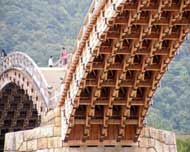
The original Kintai Bridge was built in 1673 but collapsed due to flooding. The rebuilt bridge survived for more than 200 years until a typhoon destroyed it in 1950. The bridge that stands over the Nishiki River now has 5 wooden arches displaying an incredible amount of detail and craftsmanship. Interesting fact — originally no nails or bolts were used to build the arches, achieved by the careful fitting of the wooden parts and by building up thick girders by clamping and binding them together with metal belts. The shape and weight of the bridge made it extremely strong from the top, but incredibly weak from underneath. Flood water rushing along the river would simply lift the bridge up and wash it downstream. In 1953, the bridge was once again reconstructed using very similar techniques to the original; however, they used metal nails to increase its durability. This 1953 reconstruction, partially restored in 2001 and 2004, still stands today. 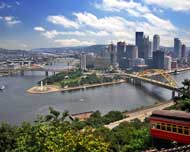
Pittsburgh is one city which is hugely dependent on bridges. This photo, taken in 2005, is by the late Kate Wassner (who died of bone cancer in 2007). 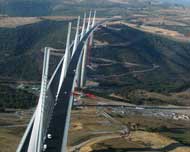
The Millau viaduct is the world's tallest bridge. It is part of the A75 highway that links Paris to the Mediterranean. It took over 3 years to build. The highway is suspended 250 metres (820 feet) over the Tarn River.
Bridges in Fog 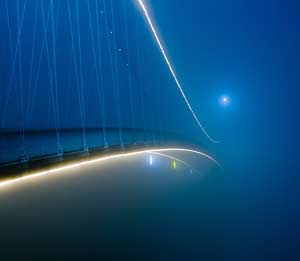
Drava River Bridge, Osijek, Croatia
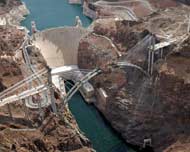
Creeping closer inch by inch, 900 feet above the Colorado River, the two sides of the bridge at the Hoover Dam slowly take shape. The bridge will carry a new section of US Route 93 past the bottleneck of the old road, which can be seen twisting and winding around and across the dam itself. The new road will be supported on the two massive concrete arches which jut out of the rock face. The arches are comprised of 53 individual sections, each 24 feet long, which have been cast on-site and are being lifted into place using an improvised high-wire crane strung between temporary steel pylons. Once the arches are complete, the suspending cables on each side will be removed. Extra vertical columns will then be installed on the arches to carry the weight of the road. The dam was started in 1931 and used enough concrete to build a road from New York to San Francisco. The stretch of water it created, Lake Mead, is 110 miles long and took 6 years to fill. 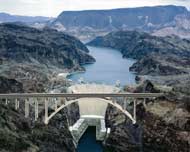
It will take longer to construct the Hoover bridge than it did to build Hoover Dam. Over 7,000,000 tourists stop to visit the dam each year clogging up the very narrow 2-lane road across the top. Weekends are worst. It's also a very winding road getting to the dam and the only way across the river for 70 miles. Large commercial trucks are no longer allowed to cross the dam because of 9/11 security, so they have to take the 70-mile detour, though this is the main route between Las Vegas and Phoenix. Traffic regularly stops and can back up 10 or more miles during high tourist hours. The official name for the bridge is proposed to be the Mike O'Callaghan — Pat Tillman Memorial Bridge (after a former governor of Nevada and an American football player from Arizona who joined the US Army and was killed in Afghanistan). This project links Nevada and Arizona, spanning the Colorado River 1,600 feet (490 metres) downstream from Hoover Dam. The bridge is expected to be open to traffic in November 2010. Its cost has been estimated at US$240 million. (That seems too low to me.) 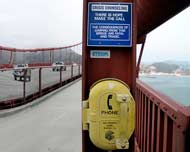
Around 1,300 people have lost their lives jumping off the Golden Gate Bridge. The 250-foot fall takes about 4 seconds and a National Public Radio documentary focusing on the last thoughts of the 26 survivors revealed that they basically all felt sharp regret as they fell. Why is it that the Golden Gate Bridge attracts so many more jumpers than the high bridges in New York? The George Washington Bridge's sidewalk is about 300 feet above the river, yet it attracts 10 jumpers per year compared to the Golden Gate's 25 — 30. (My son thinks the colour of the bridge may have something to do with it. My thought was the temperature of the water — which doesn't make as much sense, once I consider it, since Seattle's George Washington Memorial Bridge is the second deadliest suicide bridge in the US and its water is as cold as New York's. Besides, why would a suicide jumper care? The fact that the vast majority of jumpers take their last step facing east toward San Francisco instead of west toward the Pacific may offer a clue.) Suicide barriers on bridges apparently don't reduce overall suicide rates by jumping from heights, as people often just change locations for their attempt. Suicide barriers erected to prevent jumping have been established at the Empire State Building in New York City, the Eiffel Tower in Paris, and bridges worldwide. But no study has shown that a barrier has led to a statistically significant drop in overall suicide rates in an area. Special telephones with connections to crisis hotlines are sometimes installed on bridges. What if you decide to make that call to a crisis hotline instead of jumping and you open the door and see this? Is this real? Or a joke? (Every year, about 50 people are persuaded not to jump off the bridge, usually by the California Highway Patrol or by Golden Gate patrol officers. I don't know how many are talked out of it by crisis counsellors speaking to people using telephones on the bridge itself. I'd guess none if the phone doesn't work.) Oddly, while most bridge crisis phones connect to a crisis centre, the Golden Gate phones ring the bridge authority. 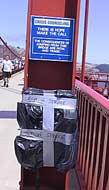
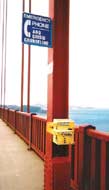
My conclusion? I think the photo above IS a joke. Unfortunately, the photos on the left and right are not. These photos are verified, whereas I could find nothing about the photo above, though it appears several places on the internet. The verified photos show a phone box taped completely up while the photo above required the photographer or prankster merely to tape on a sheet of paper to the inside of the box. But why would any incidents of out-of-service occur? Perhaps vandals destroy the phones hoping that'll prevent even one jumper from being stopped? Maybe a jumper destroys the phone when he is shocked to find himself speaking to the bridge authority rather than the counsellor he expected? San Franciscans joke about bridge suicides in the offhand way they poke fun at a losing ball team or a scandal-tinged public official. Richard Seiden, professor emeritus of behavioural science at UC Berkeley, remembers a greeting card he found in a gift shop. On the outside was a pen-and-ink drawing of the bridge. On the inside, the sentiment: "Don't jump to conclusions!" Poison, drugs and wrist-slashing are all potentially fatal, but in each case a window of time allows victims to have second thoughts. With death imminent, their lives may seem more valuable or the cost of their deaths to family and friends too high. So they call 911, a friend, or a relative. With a leap from the bridge, second thoughts are useless. Many jumps from bridges are made on a whim, meaning someone walking or driving on the bridge suddenly thinks, "What the hell," stops the car, and impulsively cartwheels over the ledge. As harps for the winds of heaven, - Joseph Strauss, Chief Engineer, Golden Gate Bridge, speaking at the opening ceremony, May 1937 In May, 1938 (one year later), Strauss died of a heart attack. A plaque is dedicated to him at the southern end of the bridge. At the dedication ceremony A R O’Brien, the bridge’s director, delivered a notably dark eulogy. Strauss “put everything he had” into the bridge’s construction, O’Brien said, “and out of its completion he got so little. The Golden Gate Bridge, for my dead friend, turned out to be a mute monument of misery.”
Odd Bridges Is the first image of another "bridge to nowhere"? This one is in the Ukraine, taken in 2008. This site has photos of more than a dozen bridges that, for various reasons, were begun but never finished. Frederic Larson, who took the photo on the right, has taken a series of shots of the moon around San Francisco, all lovely.
At left is an unknown bridge with moon. I did discover when I searched to find information on this photo that there is a whole subclass of photos of suspension bridges taken at night with a full moon. That sight brings out some deep-seated instinct to preserve it for posterity, I guess. Anyway, the photo on the right, the Clifton Suspension bridge, was taken in November 2009 by photographer Michael Buckle. I'd swear it was the same bridge taken from the same position — but they seem to be in different locations otherwise. All the night time photos I found of the Clifton Bridge show both it and Bristol as brightly lit. But this daytime shot (left-click once) shows it is definitely the same bridge. (It's amazing what you can find online!)
Or You Could Just Burn Your Bridges Like the Rest of Us Do... 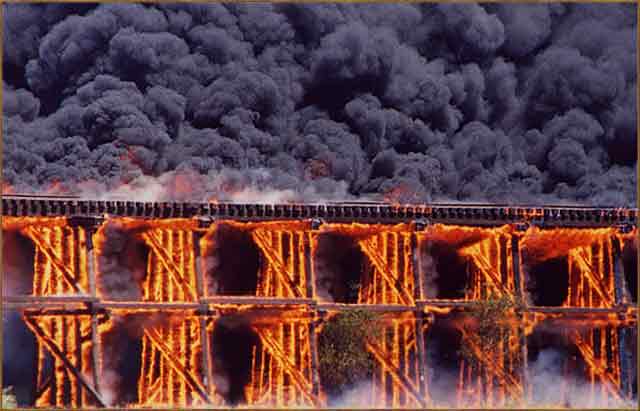
The complete and even coverage of the fire, along with the dense black smoke, is an indication that the bridge was treated with creosote (or something similar) to retard decay. However, it certainly doesn't do much to retard fires, I see.
Come to the Cosmo. The Theatre has a small dock for those patrons who prefer to come by boat. Inside, Illusions Restaurant is
at lower left,
There are no bridges in folk songs because the peasants all died while building them. — Eugene Chadbourne
For other updates click "Next" (for older) below |
 Animals
Animals Animation
Animation Art of Playing Cards
Art of Playing Cards Drugs
Drugs Education
Education Environment
Environment Flying
Flying History
History Humour
Humour Immigration
Immigration Info/Tech
Info/Tech Intellectual/Entertaining
Intellectual/Entertaining Lifestyles
Lifestyles Men
Men Money/Politics/Law
Money/Politics/Law New Jersey
New Jersey Odds and Oddities
Odds and Oddities Older & Under
Older & Under Photography
Photography Prisons
Prisons Relationships
Relationships Science
Science Social/Cultural
Social/Cultural Terrorism
Terrorism Wellington
Wellington Working
Working Zero Return Investment
Zero Return Investment